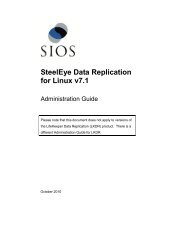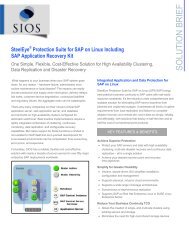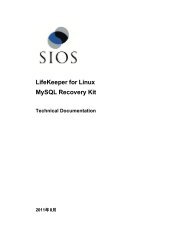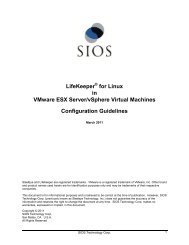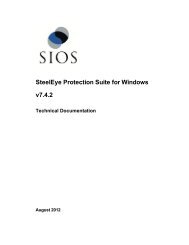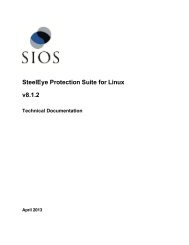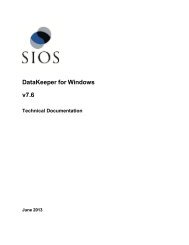WebSphere MQ Resources
WebSphere MQ Resources
WebSphere MQ Resources
Create successful ePaper yourself
Turn your PDF publications into a flip-book with our unique Google optimized e-Paper software.
<strong>WebSphere</strong> <strong>MQ</strong> Configuration Examples<strong>WebSphere</strong> <strong>MQ</strong> Configuration ExamplesThis section contains definitions and examples of typical <strong>WebSphere</strong> <strong>MQ</strong> configurations. Eachexample includes the configuration file entries that apply to LifeKeeper.Active/Standby Configuration with /var/mqm on Shared StorageIn the Active/Standby configuration, Node1 is the primary LifeKeeper server. It protects the<strong>WebSphere</strong> <strong>MQ</strong> queue managers. All storage resides on a shared array between the clusterservers. While Node2 may be handling other applications/services, it acts only as a backup for the<strong>WebSphere</strong> <strong>MQ</strong> resources in LifeKeeper’s context. The directory /var/mqm is located on sharedstorage. The primary server can run as many queue managers as it can handle.Figure 6 Active/Standby configuration with local storageConfiguration Notes• The clients connect to the <strong>WebSphere</strong> <strong>MQ</strong> servers using the LifeKeeper protected IP192.168.1.100 designated to float between the servers in the cluster.• The directory /var/mqm is located on shared storage.• Each queue manager has a TCP section added to its queue manager configuration file(qm.ini) for <strong>WebSphere</strong> <strong>MQ</strong> v5.3, or has modified the listener object to contain a portnumber for <strong>WebSphere</strong> <strong>MQ</strong> v6 and later.LifeKeeper for Linux 23



